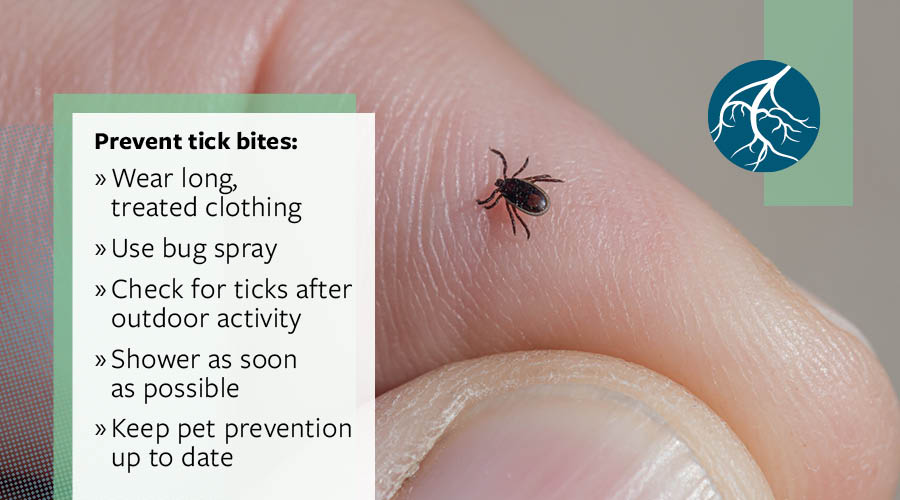Ticks can cause diseases in people and animals, may lead to neuropathy
Spending time outside has lots of positive effects on people, like boosting vitamin D, reducing anxiety, improving sleep and concentration. But a tiny tick can turn what’s normally an enjoyable experience into a health concern. Tick bites can transmit pathogens that can cause diseases in humans and pets. Things like Rocky Mountain Spotted Fever, Alpha-gal Syndrome and Lyme disease can all be caused by tick bites. Lyme disease is a bacterial infection that, if left untreated, can lead to serious complications, including neuropathy, or nerve damage. Here’s how to protect yourself from tick bites, and what to know about the neurological risks.
7 Tips to Prevent Tick Bites
- Dress Defensively
Wear long sleeves, tall socks, long pants and light-colored clothing to spot ticks more easily. - Use Tick Repellent
Apply EPA-approved repellents containing DEET, picaridin, or oil of lemon eucalyptus on skin and clothing to repel ticks. - Avoid Tick Hotspots
Stick to the center of trails and avoid tall grasses and wooded areas where ticks thrive. - Create a tick-safe yard
Keep grass short, remove leaf litter, and create a barrier of wood chips or gravel between lawns and wooded areas to deter the movement of ticks into your yard. - Shower after outdoor activities
Showering within two hours of being outdoors can help wash off ticks before they attach. - Perform tick checks after time outside
Check your body (and kids and pets!) thoroughly, especially behind the knees, underarms, scalp and groin. - Remove ticks promptly and properly
Use a fine-tipped tweezers or tick remover to grasp the tick close to the skin and fully remove it. Clean the area with antiseptic. - Keep pet prevention up to date
To help keep pets safe, make sure they’re taking the proper meds. Consult your veterinarian for additional info.
Find more tips through your local health department, or online at the Wisconsin Department of Health Services.
Lyme disease and neuropathy: what’s the connection?
Lyme disease is caused by the bacterium Borrelia burgdorferi, transmitted through the bite of infected black-legged ticks. While early symptoms include fever, fatigue, and the hallmark bull’s-eye rash, untreated Lyme can spread to the nervous system, leading to neurological Lyme disease.
Common neuropathy symptoms from Lyme:
- Numbness or tingling in hands, feet, or limbs
- Burning or shooting pain
- Muscle weakness or paralysis
- Cognitive issues like memory loss or difficulty concentrating
These symptoms may appear months or even years after the initial infection, especially if Lyme disease wasn’t diagnosed or treated early.
Diagnosis and treatment
Diagnosing Lyme-related neuropathy involves:
- Medical history and symptom review
- Blood tests for Lyme antibodies
- Nerve conduction studies (in some cases)
Treatment typically includes:
- Antibiotics (oral or IV, depending on severity)
- Pain management (medications, physical therapy)
- Supportive therapies like nutritional support or hyperbaric oxygen therapy
Avoiding tick bites is the best way to stay healthy
The best way to avoid Lyme-related complications like neuropathy is prevention and early detection. If you’ve been bitten by a tick or experience unusual symptoms after outdoor exposure, consult a healthcare provider promptly.
Additional resources
Mayo Clinic information on ticks and disease
Washington State Health Department tick photo gallery
Cheshire Medical Center tick resources







